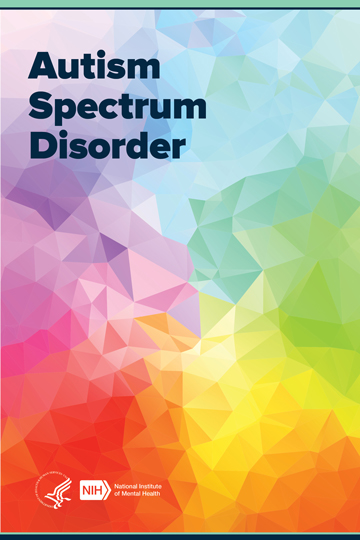Understanding the Impact of Behavioral Autism on Every Day Life and Social Interactions
You could not realize just how deeply behavioral autism affects life and social communications. People on the spectrum frequently browse a world full of communication obstacles and sensory overload. These difficulties can lead to frustration and seclusion, influencing their partnerships and general well-being. Understanding these nuances is necessary for promoting supportive atmospheres. What approaches can we execute to create more inclusive areas and purposeful connections? The answers could shock you.
Specifying Behavior Autism and Its Features
Behavioral autism, commonly described as autism spectrum disorder (ASD), includes a variety of problems identified by difficulties in social interaction, communication, and repeated behaviors. You might observe that individuals with ASD frequently battle to translate social cues, which can lead to misconceptions in discussions. They may discover it difficult to establish eye call or take part in little talk, making social situations feel overwhelming.
Communication troubles can manifest in various methods, from delayed speech advancement to a preference for using fewer words. Repeated behaviors, such as hand-flapping or shaking, can function as coping systems to manage stress or sensory overload. These characteristics can exceptionally influence day-to-day live, making it essential for you to recognize and support those with ASD. By identifying these attributes, you can cultivate an environment that promotes approval and urges effective communication, helping individuals with autism flourish in their daily interactions.
The Spectrum of Autism: Comprehending Variability in Behavior
Autism range condition (ASD) isn't a one-size-fits-all diagnosis; it varies extensively among individuals. You might observe that some individuals with ASD exhibit light symptoms, while others might encounter much more significant obstacles. This irregularity can manifest in behaviors, interests, and sensory sensitivities. You may experience individuals that are extremely verbal and engage easily in conversations, while others might prefer solitary activities or connect non-verbally.
Moreover, the way individuals with ASD respond to sensory input can vary considerably; some could be overwhelmed by loud sounds or intense lights, whereas others thrive in boosting environments. The range also consists of differences in social interactions; some people might battle to translate social signs, while others browse social setups with family member convenience. Understanding this variability is necessary, as it assists you value each person's special experience and dressmaker support to their particular requirements, promoting an extra comprehensive environment for every person.
Interaction Difficulties Dealt With by People With Autism
When you interact with individuals on the autism spectrum, you may observe their unique communication obstacles. They typically encounter difficulties with both verbal and nonverbal hints, which can affect their social interactions. Comprehending these obstacles is crucial for promoting better links and support.
:max_bytes(150000):strip_icc()/VWH-LauraPorter-SpectrumOfAutismTraits-4000x2700-0b5d3311e5794f6ca7e72bdc4672eae5.png)
Verbal Communication Problems
Lots of individuals on the autism spectrum experience spoken interaction difficulties that can substantially influence their day-to-day interactions. Your tone, speed, or volume might not straighten with social assumptions, causing others to misunderstand your purposes. Acknowledging these difficulties can assist you and your support network create techniques to improve interaction and promote better links with others in your daily life.
Nonverbal Interaction Barriers
Spoken interaction isn't the only obstacle people on the autism range face; nonverbal interaction obstacles can be simply as substantial. These difficulties can lead to misconceptions or false impressions of social hints, making interactions feel frustrating or complex. By dealing with nonverbal communication, you can discover approaches to boost your social experiences and boost your overall high quality of life.
Social Interaction Effects
Social communications can usually feel frustrating as a result of the one-of-a-kind communication difficulties faced by individuals with autism. You might struggle with interpreting social signs, making it difficult to comprehend mockery or body language. This can cause misunderstandings or uncomfortable moments in discussions. In addition, launching and keeping conversations may really feel tough, triggering stress and anxiety in social circumstances. You may prefer organized settings, making spontaneous communications awkward. It's also usual to experience difficulty in taking part in tiny talk, which can prevent developing new friendships. Identifying these obstacles can assist you discover strategies to boost interaction, such as practicing social abilities in secure setups or making use of aesthetic aids - Autism Therapist. Recognizing your requirements enables you to browse social interactions with greater self-confidence and ease.
Social Communication and Connection Structure in Autism
While building relationships can be testing for people with autism, comprehending their one-of-a-kind perspectives and communication designs can foster purposeful connections. You may see that lots of people on the range favor direct communication and may deal with social cues or tiny talk. By being straightforward in your interactions, you can aid develop an atmosphere where they really feel comfortable.
Involving in shared interests can also serve as a bridge to deeper connections. Whether it's a pastime, a preferred program, or a mutual passion, these common strings can open up doors to relationship.
Life Regimen: Navigating Methods and obstacles
Steering everyday life regimens can be especially testing for people with autism, specifically when unforeseen adjustments happen. To browse these obstacles, take into consideration executing aesthetic timetables or lists.
Establishing a regimen that includes sensory breaks can also be useful. You can prepare time-outs throughout your day to reenergize. It's necessary to communicate with those around you, letting them recognize your requirements and choices. This helps produce an understanding setting.
Lastly, method mindfulness techniques to manage stress and anxiety and anxiety. Simple breathing workouts or grounding methods can make a substantial difference. By integrating these strategies, you can enhance your everyday regimen and decrease disruptions, making life feel a lot more workable.
Toughness and Capabilities of People on the Autism Range
Comprehending daily life routines is just one facet of the autism experience. Many people on the autism range have amazing staminas and capabilities that establish them apart.
Additionally, your memory skills commonly radiate, particularly in locations of interest. Aba Therapist Near Me. This flair for preserving details can make you a beneficial source in areas like innovation, science, or art. You may likewise exhibit strong aesthetic reasoning, enabling you to visualize complex concepts and resolve issues creatively
Additionally, your distinct perspective on the globe can promote empathy and understanding in others, improving social interactions. Welcoming these staminas not just improves your confidence however additionally aids others value the diverse skills you bring to the table.
Producing Inclusive Environments for People With Autism
Producing comprehensive atmospheres for individuals with autism starts with making sensory-friendly areas that satisfy look here their special requirements. You can also foster possibilities for social interaction, helping to build connections and relationships. By making these adjustments, you'll add to a more inviting ambience for everybody.
Designing Sensory-Friendly Spaces
While creating sensory-friendly spaces, it's crucial to review the special needs of individuals with autism. Begin by selecting relaxing colors and soft illumination to create a calming environment. Incorporate quiet areas where people can pull away and charge when bewildered. You'll wish to minimize loud noises and disturbances, using soundproof materials or white sound devices to aid preserve harmony. Consider tactile elements like soft fabrics or fidget-friendly items that can supply convenience. Ascertain that spaces are flexible, permitting easy see here reformation to suit various tasks. Ultimately, consist of aesthetic schedules or clear signage to help individuals browse the room with confidence. By attentively incorporating these components, you can create an inviting environment that supports sensory demands and advertises overall wellness.
Promoting Social Interaction Opportunities
Designing sensory-friendly rooms not only addresses individual comfort yet also establishes the stage for meaningful social interactions amongst people with autism. Urge peer mentoring, pairing people with autism with helpful peers who can direct them with social situations. By carrying out these strategies, you can improve social opportunities, helping individuals with autism construct relationships and reinforce their social skills in a secure, welcoming atmosphere.

Regularly Asked Questions
How Can Friends Support Somebody With Behavioral Autism?
You can support a close friend with behavior autism by being patient, listening actively, and valuing their boundaries. Participate in tasks they enjoy, connect freely, and create a comfortable atmosphere where they feel valued and comprehended.
What Resources Are Available for Moms And Dads of Kid With Autism?
You can explore numerous check my source sources for parents of children with autism, including support system, educational websites, and neighborhood neighborhood solutions. Connecting with various other parents can likewise give useful understandings and shared experiences to assist navigate obstacles.
Can Behavioral Autism Adjustment In Time?

Yes, behavioral autism can transform in time. You could see shifts in interaction, social abilities, and actions as your child expands. Early intervention and support usually play essential duties in these developing adjustments.
Just How Do Sensory Level Of Sensitivities Influence Every Day Life?
Sensory sensitivities can make everyday experiences overwhelming. You may battle with loud noises or brilliant lights, resulting in stress and anxiety or evasion. Finding atmospheres that fit your demands can substantially improve your convenience and general every day life.
What Are Typical Misconceptions About Behavioral Autism?
You may think behavior autism just impacts communication abilities, but it's more complex. Numerous think people do not have empathy or knowledge, which isn't true. Recognizing these misunderstandings assists foster approval and assistance for those on the spectrum.
Behavior autism, usually referred to as autism range problem (ASD), encompasses a range of conditions defined by obstacles in social communication, communication, and recurring actions.Social communications can frequently feel overwhelming due to the special interaction difficulties dealt with by people with autism.Creating sensory-friendly rooms not only addresses individual comfort however also establishes the stage for meaningful social communications among individuals with autism. Urge peer mentoring, combining people with autism with helpful peers that can lead them with social situations. By carrying out these methods, you can enhance social possibilities, helping people with autism build relationships and enhance their social abilities in a safe, inviting atmosphere.
 Danny Tamberelli Then & Now!
Danny Tamberelli Then & Now! Michael Bower Then & Now!
Michael Bower Then & Now! Justine Bateman Then & Now!
Justine Bateman Then & Now! Bill Cosby Then & Now!
Bill Cosby Then & Now! Bill Murray Then & Now!
Bill Murray Then & Now!